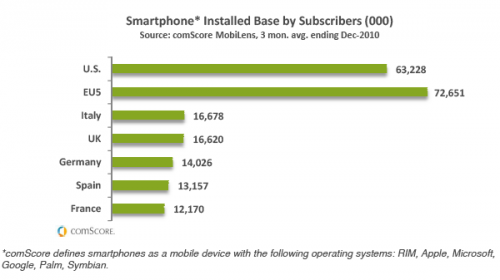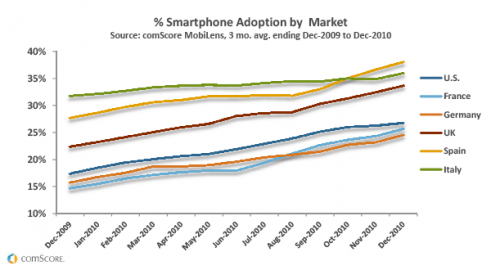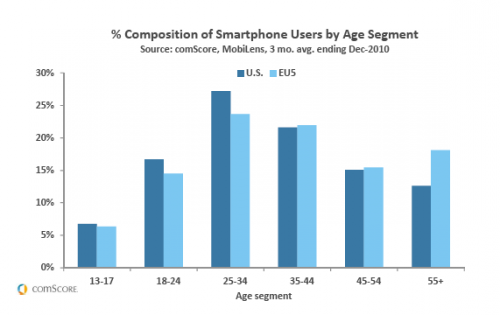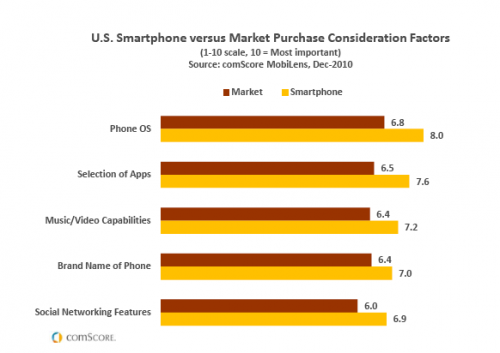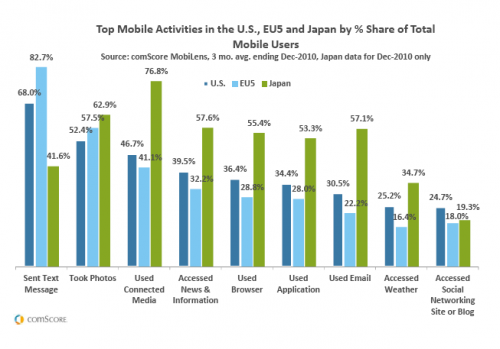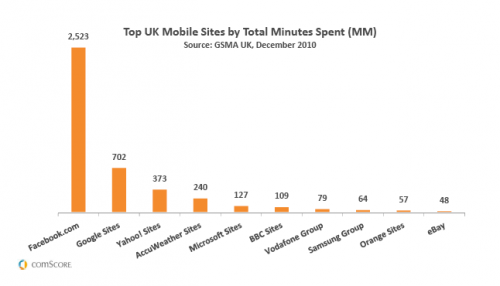comScore Looks Back At Smartphone Growth In “Mobile Year In Review”
comScore has released “The 2010 Mobile Year in Review,” which compiles data the company has mostly already released in various forms from the previous year. However it’s nice to have it all in one place. The report covers the US, EU and Japanese markets at a high level. It largely depicts the growth of smartphones […]
comScore has released “The 2010 Mobile Year in Review,” which compiles data the company has mostly already released in various forms from the previous year. However it’s nice to have it all in one place.
The report covers the US, EU and Japanese markets at a high level. It largely depicts the growth of smartphones across markets, the competition among the various operating systems and some of the demographics, attitudes and behaviors of mobile users.
Outside the US the degree of smartphone penetration is larger in relation to the overall market. However the US smartphone market will likely surpass Europe this year in real terms.
European smartphone owners tend to be older than their counterparts in the US:
For US smartphone owners the operating system has become a very significant purchase consideration, though overall cost (not reflected here) is still a driver of purchase decisions for mobile users.
Below is a comparison of a range of mobile activities in the three regions measured by comScore. Japan leads in most areas except texting and social media.
The now-tired arguments about Europe and Japan being “so much farther along” than the US need to be put to bed. People who make these statements routinely are not really paying attention. We’ve got similar markets but they’re not identical, nor is one a clear predictor of behavior in another.
And here’s perhaps the most striking graphic of the report: the discrepancy in mobile engagement and time spent among the top branded sites in the UK market. Facebook, far and away, is the leader in total engagement with more than 3X the mobile time spent on Google, which is partly to be expected given the different natures of social media and search.
The report ends with a prediction that all the pieces are in place for mobile advertising to take off. The issue is not whether mobile advertising grows at some anticipated rate but whether marketers effectively reach mobile consumers, an increasingly important audience that is more receptive and ready to act, typically, than those using PCs.
Contributing authors are invited to create content for Search Engine Land and are chosen for their expertise and contribution to the search community. Our contributors work under the oversight of the editorial staff and contributions are checked for quality and relevance to our readers. The opinions they express are their own.
Related stories
New on Search Engine Land
